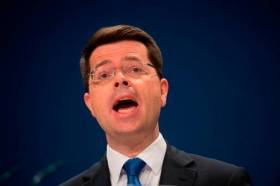Displaying items by tag: Irish 'Brexit' Border Ports
UK Immigrant Controls Could Shift to Irish Ports to Avoid 'Hard Border'
#IrishBrexitPorts- Irish ports and airports is where the UK are proposing to transfer frontline immigration controls to, writes The Irish Independent in measures to avoid enforcing a ‘hard border’ between the North and the Republic.
Northern Ireland Secretary, James Brokenshire, has said that London and Dublin will work to strengthen Ireland’s external borders to prevent illegal migration to the UK. The move would come into effect once the UK leaves the European Union.
Speaking to The Guardian, Mr Brokenshire said there was now a “high level of collaboration on a joint programme of work” between Ireland and Britain. “We have put in place a range of measures to further combat illegal migration working closely with the Irish government,” he said.
“Our focus is to strengthen the external border of the common travel area [CTA], building on the strong collaboration with our Irish partners.” He also stressed that Brexit would not destabilise Northern Ireland’s power-sharing institutions, and would not provide dissidents with a propaganda boost.
“There is no reason to think that the outcome of the referendum will do anything to undermine the rock-solid commitment of the UK government and the people of Northern Ireland to the settlement set out in the Belfast agreement and its successors," he added.
Questions over the north-south border have been rampant since the UK voted to leave the EU, with fears that border controls would have to be put in place to control immigration.
Such measures could be seen as a violation of the Good Friday agreement. But shifting the focus of immigration controls to Rosslare Europort and Dublin Airport could help to avoid such a violation.
The proposed measures would be mainly aimed at non-Europeans wishing to enter the common travel area between Ireland and Britain.
For more the newspaper has a report here.






























































